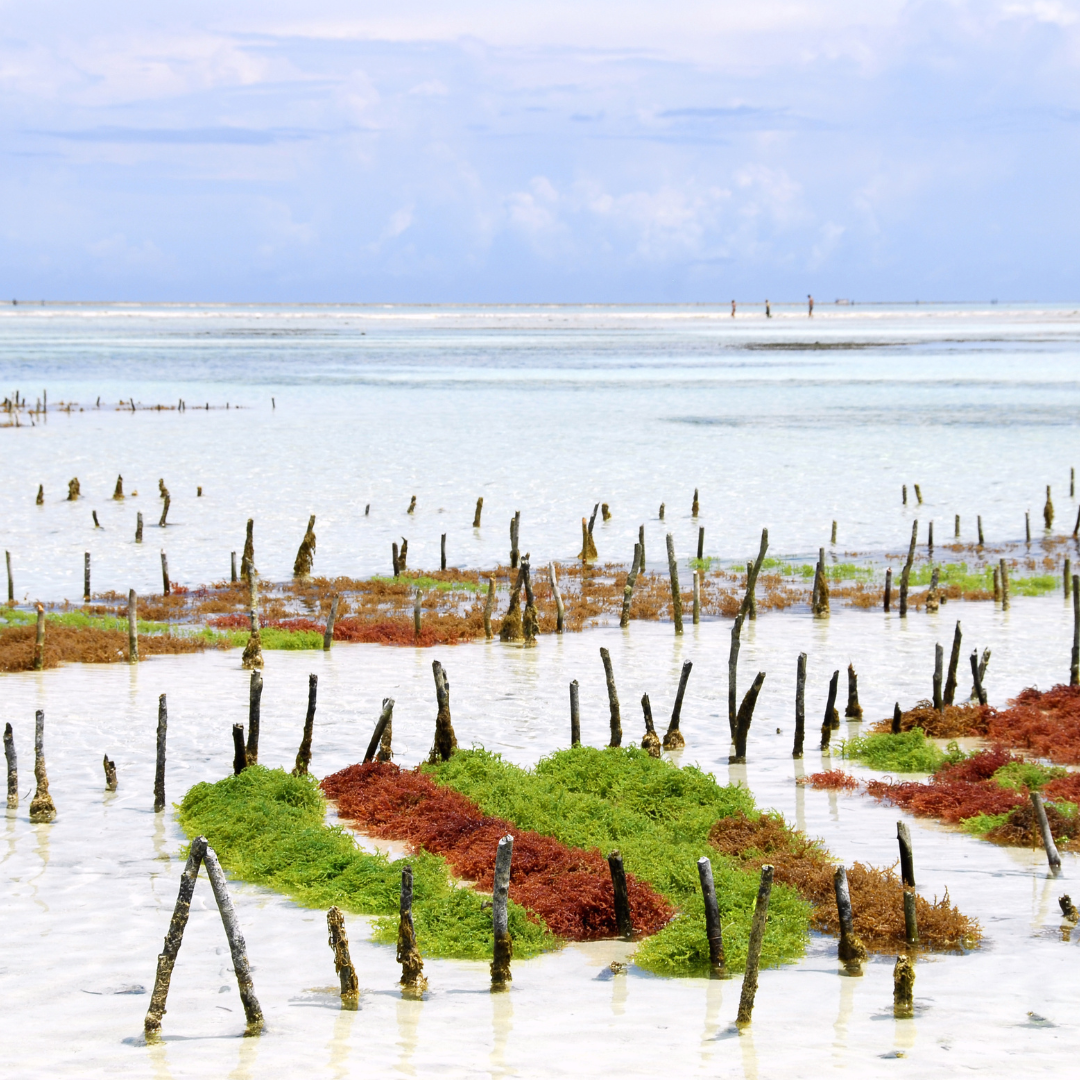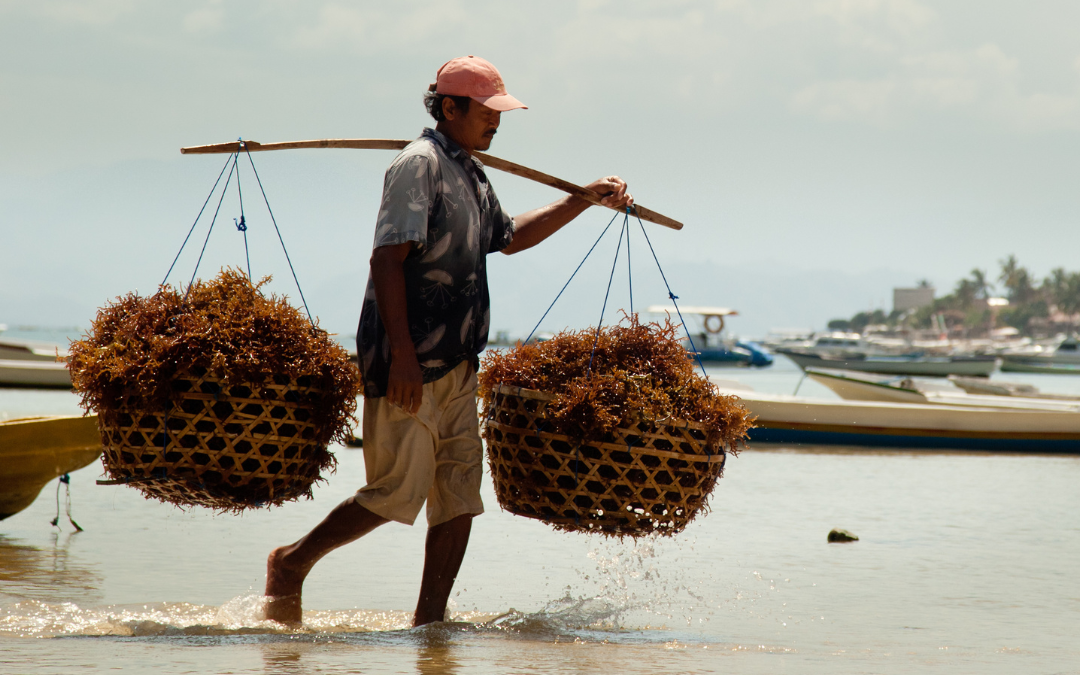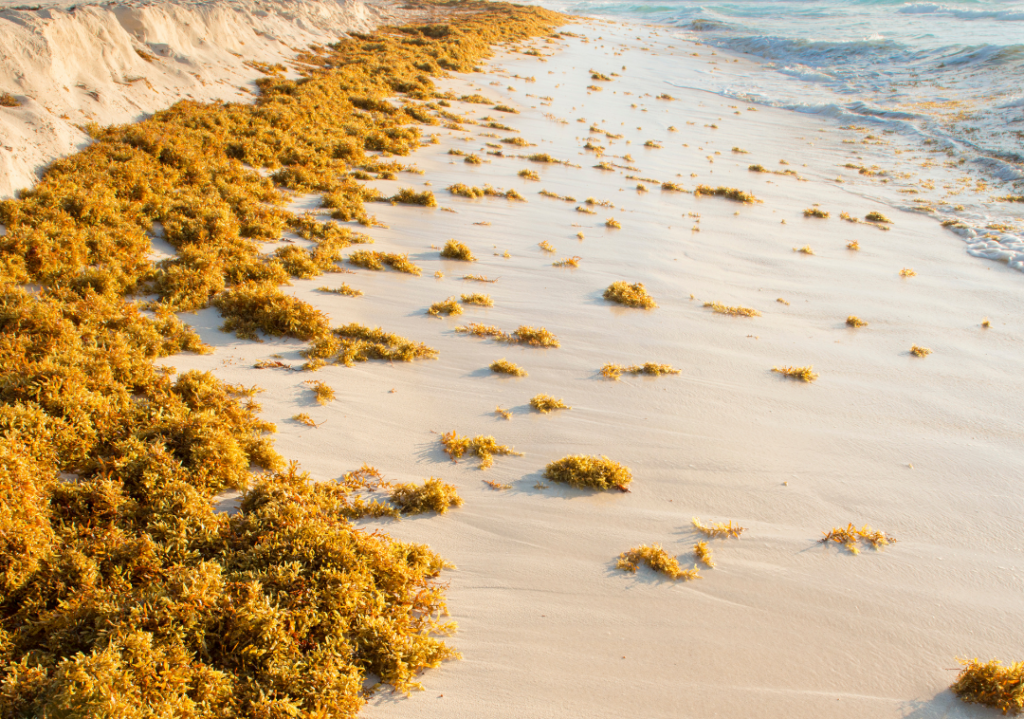
Image Credit: Canva
Chances are that if you work in the ocean space, then you know that seaweed is having a moment. From exciting possibilities for nourishing plant-based food products, promising research into its carbon capture capabilities, and a wealth of innovative applications, such as alternatives to plastic packaging, there is no doubt that seaweed’s trendiness is well-earned.
Future of Fish has been eagerly delving into the emerging body of research around seaweed. Our team is particularly motivated by seaweed’s potential to unlock new opportunities in revenue diversification for at-risk coastal communities, as coastal livelihoods are increasingly threatened by overfishing and the impacts of climate change. To this end, our team has been participating in learning and networking events to expand our knowledge and meet new partners within this burgeoning sector. One such event was the Blue Food Innovation Summit this past May. The summit featured an illuminating panel discussion entitled Accelerating the Seaweed Revolution: Driving Innovation to Harness Seaweed’s Position as Blue Food. We have synthesized our top five key takeaways from this fascinating discussion below:
- Seaweed isn’t new in the United States. According to panelist Jesse Baines, chief marketing operator at Atlantic Sea Farms, the two biggest U.S.-based importers of seaweed as food are Costco and Trader Joe’s. What is new in the U.S. is the idea of farming seaweed, as currently, 98% of the seaweed consumed in our country is coming from overseas. This means that the opportunity to grow a more robust North American seaweed industry is therefore considerable.
2. We have only skimmed the surface when it comes to investigating seaweed species. Fascinatingly, global production is dominated by five main species (HATCH Seaweed Insights) when according to panelist Shrikumar Suryanarayan, the managing director of Sea6 Energy, there are somewhere between 8,000 to 9,000 species in total around the world! “Seaweed is as different as the number of plants that we have in agriculture,” Suryanarayan said. Interestingly, he highlighted that seaweed species that are grown in the tropics are richer in carbohydrates, while species that grow in the colder, more northern latitudes are richer in protein. “It is not unheard of that certain coldwater species contain as much as 20% protein.” This high protein content undoubtedly has interesting implications for a world with ever-increasing food security needs.
3. The combination of growing seaweed in tandem with other blue food operations can further increase the overall quality of both resulting harvested species. The concept is referred to as Integrated Multi-Trophic Aquaculture (IMTA). The University of Maine states that the benefits of farming two or more organisms together in an IMTA system can be improved efficiency, reduced waste, and enhanced ecosystem services, such as bioremediation, or the process of using microorganisms to detoxify contaminants in the environment. Panelist Paul Dobbins, senior director of impact investing and ecosystems services on the WWF-US aquaculture team, shared a compelling anecdote about seaweed and mussels grown in tandem. Not only did the practice of IMTA result in a higher quality mussel, but the seaweed grew 25-29% faster, thereby ensuring a faster return on investment.

Image Credit: Canva
4. When considering the workforce development required to grow and scale seaweed aquaculture, the inclusion of fishing families is a powerful strategy. “Fishing families are uniquely positioned to scale this industry faster and better than perhaps anyone else,” said Baines. “They have already made investments in key infrastructure required for success, they possess a generational knowledge of working on the water that can’t be replicated or taught, and have a sense of urgency.” Panelist Mike Williamson, president and founder of Cascadia Seaweed, further emphasized the importance of involving community stakeholders, saying that “it is all about dialoguing with the communities with which you’re working.” On this point, Future of Fish couldn’t agree more—intentional and authentic co-collaboration with at-risk coastal communities is imperative in any emerging blue economy sector, seaweed included.
5. Lastly, the revolutionary potential of seaweed to reduce our societal reliance on high-carbon inputs through the application of biostimulants warrants further investigation. Neither fertilizer nor pesticide, Suryanarayan labels biostimulants as a new and distinct third category of agricultural inputs. According to the panel, among biostimulants’ exciting agricultural capacities are:
-
-
-
-
-
- Improved usage of fertilizers by crops
- Increased level of photosynthesis and cell division in crops
- Regeneration of broader soil health
- Enhanced carbon removal by soils
-
-
-
-
Recognizing what a massive undertaking it is to restructure supply chains, the promise of biostimulants lies in their potential to alter existing agriculturally-based supply chains so that they are much less carbon-intensive. This is what panelist Lisa Boulton, the ocean regeneration lead for Purina Nestle Petcare Europe, highlighted as seaweed’s greatest potential.
“The wonderful thing about seaweed as a biostimulant is that it tackles multiple problems at the same time,” Boulton said. “You’ve got the ocean benefits from the seaweed itself, but more importantly, you’ve got the way that we can use it to improve productivity and land use at the moment. We can also reduce the amount of inorganic fertilizers. A lot of the problems in the ocean are coming from the excess nutrient runoff from inorganic fertilizers. If we can tackle the problem at both ends, then we’re turning from the vicious cycle that we’re in at the moment into a more virtuous, regenerative cycle overall.”
With so many positive attributes — for the land, for people, and for the ocean— Future of Fish is encouraged by what the seaweed industry could mean for accelerating a sustainable and just blue economy. That is why along with increasing our subject matter expertise in seaweed by attending events like the Blue Foods Innovation Summit, we have also been prioritizing building new partnerships with innovative startup companies that are leading the way in ensuring seaweed is included in the broader suite of blue economy solutions.
One of these champions is Carbonwave. Founded in 2020, Carbonwave is a Puerto Rican B-corporation operating in the Mexican Maya Riviera. The company is turning wild-harvested Sargassum, (a type of free-floating and rootless seaweed species known best for washing ashore in massive quantities along the Mesoamerican Caribbean and Floridian coastlines) into innovative products like agricultural biostimulants, but also, cosmetic emulsifiers, vegan leather, and seaweed-based 3D printing products. Carbonwave is also currently exploring the development of bioplastic and biofuels.

Image Credit: Canva
In May 2023, Luis Miguel Ormeño, Senior Financial Specialist at Future of Fish, was invited to visit their processing facility in Puerto Morelos, Quintana Roo, Mexico. Accompanied by colleagues from MAR Fund and Healthy Reefs for Healthy People, the visiting delegation learned firsthand about the work they are doing with Sargassum. Carbonwave’s proprietary approach turns Sargassum — which has long been considered an environmental scourge— into materials that can restore soils and oceans, eliminate plastic debris in our waterways, reduce our dependence on fossil fuels, and move the needle on achieving carbon neutrality.
Seaweed provides a sustainable and regenerative platform to address CO2 sequestration, pollution, and the loss of livelihoods as a result of our climate emergency. Carbonwave’s systems-level approach means that every part of its operation — from collection to distribution — is geared at restoring vital ecosystems and supporting resilient circular economies.
Future of Fish is thrilled to be expanding into the seaweed sector and is honored to team up with private companies like Carbonwave that are innovating nature-based solutions that will support the transition into circular and blue economies while addressing environmental and socioeconomic challenges.
If your organization is interested in partnering to unlock seaweed solutions for at-risk coastal communities, please get in touch with us at info@futureoffish.org
Published Jul 20, 2023




